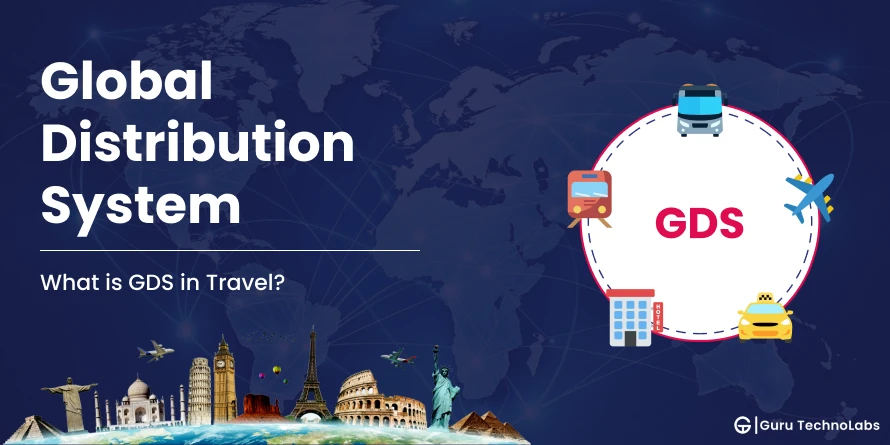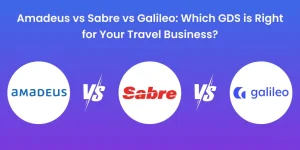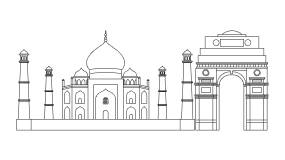Did you know the technology that allows travel agents to book flights, hotel rooms, car rentals, and vacation packages in real time has existed since the 1960s? Originally developed to help airlines manage seat inventory, this system has evolved into a powerful, behind-the-scenes engine driving the global travel industry.
This system is known as the Global Distribution System (GDS), a digital network that connects travel service providers with booking platforms worldwide, delivering instant access to prices, availability, and reservations.
Whether you’re browsing flights on an OTA like Expedia or finalizing a complex itinerary with a travel agent, GDS is likely powering the process. It plays a crucial role in today’s travel ecosystem, helping airlines, hotels, and agencies operate more efficiently.
In this guide, you’ll discover:
- What GDS is?
- Why does GDS matter?
- Differences between GDS, IDS, and CRS
- Major GDS providers
- Challenges of using GDS
- What the future holds for GDS technology
What is GDS (Global Distribution System) and Why Does It Matters?
GDS (Global Distribution System) is a computerized network that connects travel service providers, such as airlines, hotels, car rental companies, and cruise lines with travel agents and online booking platforms. It enables real-time access to inventory, pricing, and bookings, all in one place.
In simple terms, GDS acts as the middleman that helps sell travel products around the world – instantly and efficiently.
According to Statista, the global GDS market size is estimated to grow from $15.1 billion in 2022 to $18.6 billion by 2029.
Why does GDS Matter?
- Helps travel companies distribute their services to a worldwide audience.
- Instantly updates prices, availability, and bookings.
- Let agents book flights, hotels, cars, and more from different providers on a single screen.
- Powers the platforms travelers use every day.
- Increases visibility and booking potential for suppliers.
- Reduces manual work through automation and integration.
GDS vs IDS: What’s the Difference?
While both GDS and IDS (Internet Distribution System) help distribute travel services online, they serve different users and purposes:
| Feature | GDS | IDS |
|---|---|---|
| Audience | B2B (Travel Agents, Agencies) | B2C (OTAs like Expedia, Booking.com) |
| Usage | Connects providers to agents for real-time booking | Pushes inventory to consumer booking sites |
| Example | Amadeus, Sabre | Agoda, Hotels.com |
GDS powers travel agents, while IDS powers consumer-facing booking websites. Understanding the features of GDS can helps to understand how GDS effective for agents.
What is the Difference Between GDS and CRS?
The distinction between GDS (Global Distribution System) and CRS (Central Reservation System) lies in scope and purpose:
- CRS is an internal system used by a specific hotel, airline, or car rental brand to manage its inventory, prices, and reservations.
- GDS connects many CRS systems to external travel agents and platforms, enabling global distribution.
The Main ‘Big Three’ Legacy GDS Systems
The travel industry is dominated by three major legacy GDS platforms, often called the “big three”: Amadeus, Sabre, and Travelport.
- Amadeus (Spain): Strong presence in Europe, Asia, and Latin America. Widely used for airline and hotel bookings.
- Sabre (USA): Popular in North America with robust airline partnerships and agent tools.
- Travelport (UK): Operates Galileo, Worldspan, and Apollo. Known for global reach and flexible integrations.
Together, these three systems power the majority of traditional travel bookings across the world and are often featured among the Top GDS systems. They represent different types of GDS based on regional dominance, features, and capabilities.
Key Challenges and Considerations When Using GDS
While GDS is a powerful tool, it comes with a few real-world challenges businesses should keep in mind:
- High Costs: Licensing and integration fees can be expensive, especially for small or mid-sized businesses.
- Technical Complexity: Integrating GDS often requires advanced setup or third-party support.
- Legacy Technology: Some platforms use outdated systems that lack modern features.
- Limited Customization: Standardized interfaces limit personalization and branding.
- Vendor Dependency: Heavy reliance on third-party platforms can lead to reduced control and increased fees.
The Future of Global Distribution Systems (GDS)

Source: Future Market Insights
The travel industry is evolving fast, and GDS platforms are adapting to stay relevant in a digital-first world:
- API-first Integrations: Modern GDSs are adopting API-first architectures for faster, easier connectivity with websites, apps, and CRMs.
- NDC (New Distribution Capabilities): Airlines are pushing direct content through NDC, reducing reliance on traditional GDS paths.
- Personalization & AI: Future GDS offerings may include more personalized search results, powered by AI and data.
- Mobile-ready Solutions: Mobile-first looking and GDS access are becoming a priority to match traveler behavior.
- Hybrid Models: GDS may evolve to work alongside direct booking engines rather than compete with them.
The future of GDS is not about replacement – it’s about reinvention to serve a more connected, digital, and data-driven travel landscape.
How GuruTechnoLabs Can Help You?
At Guru TechnoLabs, we make GDS integration smooth, scalable, and future-ready. Whether you’re a travel agency, OTA, or hospitality brand, we help you connect with major GDS providers using:
- Modern API-based integrations
- Customized booking engine development
- End-to-end technical support and consulting
From initial setup to long-term strategy, we handle the complex tech so you can focus on growing your travel business. Ready to expand your reach and tap into global travel inventory? Let Guru TechnoLabs be your trusted partner in next-generation travel technology.


















